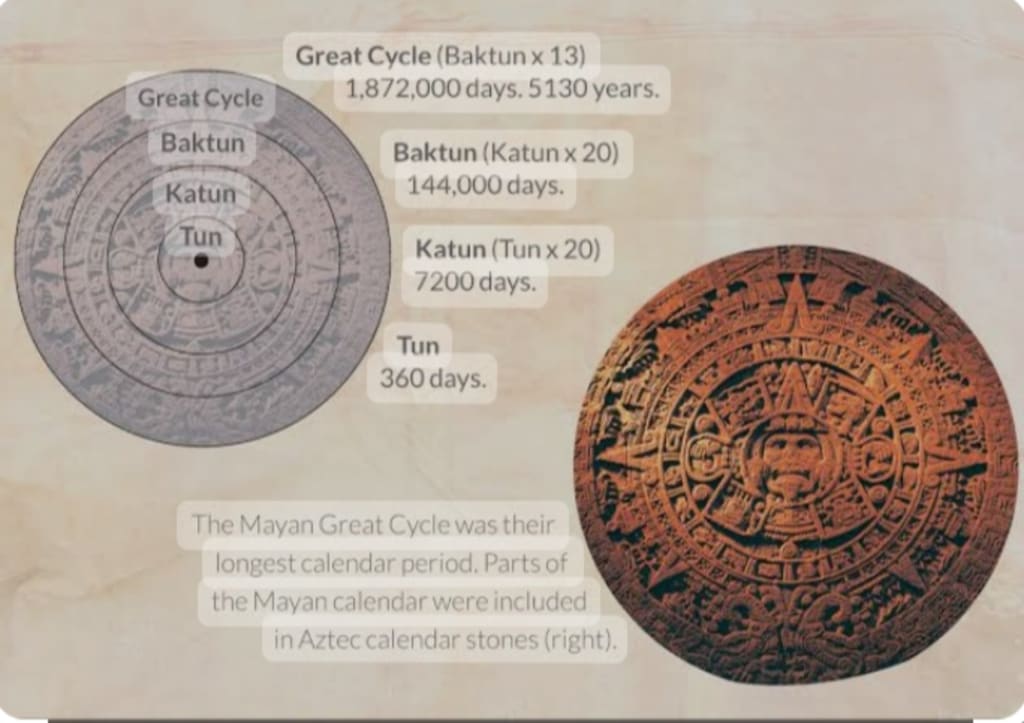
calendar, any system for dividing time over extended periods, such as days, months, or years, and arranging such divisions in a definite order. A calendar is convenient for regulating civil life and religious observances and for historical and scientific purposes. The word is derived from the Latin calendarium, meaning “interest register” or “account book,” itself a derivation from calendae (or kalendae), the first day of the month in the Roman republican calendar, the day on which future market days, feasts, and other occasions were proclaimed.
The development of a calendar is vital for the study of chronology, since this is concerned with reckoning time by regular divisions, or periods, and using these to date events. It is essential, too, for any civilization that needs to measure periods for agricultural, business, domestic, or other reasons. The first practical calendar to evolve from these requirements was the Egyptian, and it was this that the Romans developed into the Julian calendar that served western Europe for more than 1,500 years.
The basic unit of computation in a calendar is the day. Although days are now measured from midnight to midnight, this has not always been so. Astronomers, for instance, from about the 2nd century CE until 1925, counted days from noon to noon. In earlier civilizations and among primitive peoples, where there was less communication between different settlements or groups, different methods of reckoning the day presented no difficulties. Most primitive tribes used a dawn-to-dawn reckoning, calling a succession of days so many dawns, or suns.
There was also great variety in the ways in which the day was subdivided. In Babylonia, for example, the astronomical day was divided differently than the civil day, which, as in other ancient cultures, was composed of “watches.” The length of the watches was not constant but varied with the season, the day watches being the longer in summer and the night watches in the winter. Such seasonal variations in divisions of the day, now called seasonal or temporal hours, became customary in antiquity because they corresponded to the length of the Sun’s time above the horizon, at maximum in summer and at minimum in winter. Only with the advent of mechanical clocks in western Europe at the end of the 13th century did seasonal (unequal) hours become inconvenient
Most early Western civilizations used 24 seasonal hours in the day—12 hours of daylight and 12 of darkness. This was the practice of the Greeks, the Sumerians and Babylonians, the Egyptians, and the Romans—and of Western Christendom so far as civil reckoning was concerned. The church adopted its own canonical hours for reckoning daily worship: there were seven of these—matins, prime, terce, sext, none, vespers, and compline—but in secular affairs the system of 24 hours held sway.
Once the day is divided into parts, the next task is to gather numbers of days into groups. Among primitive peoples, it was common to count moons (months) rather than days, but later a period shorter than the month was thought more convenient, and an interval between market days was adopted.
The seven-day week may owe its origin partly to the four (approximately) seven-day phases of the Moon and partly to the Babylonian belief in the sacredness of the number seven, which was probably related to the seven planets. Moreover, by the 1st century BCE the Jewish seven-day week seems to have been adopted throughout the Roman world, and this influenced Christendom. The names in English of the days of the week are derived from Latin or Anglo-Saxon names of gods.
The month is based on the lunation, that period in which the Moon completes a cycle of its phases. The period lasts approximately 29 1/2 days, and it is easy to recognize and short enough for the days to be counted without using large numbers. In addition, it is very close to the average menstrual period of women and also to the duration of cyclic behaviour in some marine creatures.
About the Creator
Enjoyed the story? Support the Creator.
Subscribe for free to receive all their stories in your feed. You could also pledge your support or give them a one-off tip, letting them know you appreciate their work.





Comments (1)
Hello, AI is permitted on Vocal. It is a Vocal policy that content created with AI is identified as such at the start of the story/article. Your article/story has many hallmarks of AI-assisted/generated content. You can find the details of the Vocal policy here: https://vocal.media/resources/an-update-from-vocal-on-ai-generated-content, Please amend your piece to be in compliance. If you are not a Vocal+ member you will need to contact Vocal here ([email protected]) and ask them to edit your story/article/poem for you. If you don’t correct this the content may be removed by Vocal and/or you may be deleted from the platform.